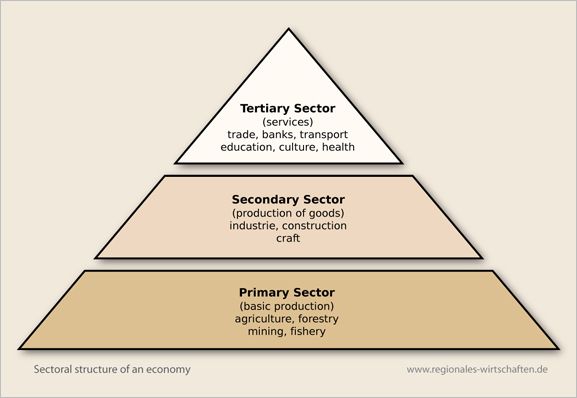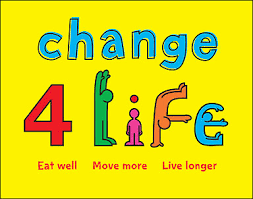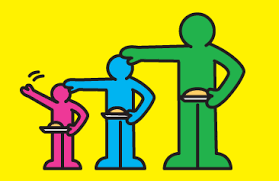•7th Largest in the world
•3rd Largest in Europe
•One
of the most globalised countries
•London
is the largest financial centre equal with New York
Largest
industries – aerospace, pharmaceuticals, North Sea oil and gas
http://www.designcouncil.org.uk/Documents/Documents/Publications/Business%20of%20Design_Design_Council.pdf
Industry Sectors

http://geography.about.com/od/urbaneconomicgeography/a/sectorseconomy.htm
Primary Sector
- Products from the earth
- mining
- farming
- forestry
The Primary Sector of the economy is based on extracting produce from the Earth, it also covers the production of raw material and basic food. The packaging of the materials made in this sector are also associated with it.
- Manufacturers of products using materials from primary sector
- Smelting etc
- Chemical Engineering
- Breweries
- Construction
The Secondary Sector is based on manufacturing, processing and constructing finished goods.
Tertiary Sector
- Service
- Transportation
- Distribution
- Restaurants
- Retail
- healthcare
- Banking
This is the service industry is the sector that members of the general public will interact and deal with.
Quaternary Sector
- Intellect
- Government
- Research
The Quaternary sector hosts intellectual professions such as Government, Research and Education.
Why is this Important?
"Dividing an economy into different sectors with defined similarities allows for more in-depth analysis of the economy as a whole. Any economy can be divided into sectors, such as the economy of a particular city, or the global economy."
The Service Industries
The service industry is concerned with retail, distribution, food and transport. The service industry can be divided into 3 further sections:
- Public Sector
- Private Sector
- Third Sector
Public Sector
The public sector provides services that are free at the point of delivery such as health care, street lighting, these services often benefit the whole society rather than a specific group of people.
Private Sector
Private sector covers all 'for- profit' businesses, this is the sector that contains the majority of jobs in the UK. The services may benefit the market but the primary goal is to get profit.
Third Sector
This covers all not-for-profit or charity organisations.
The Creative Industry
The creative industry covers a vast range of professions such as: advertising, craft, fashion, film, software development, publishing, TV, music, etc.
“Design is the thread that connects ideas and discovery to people and markets”
The Business of Design
The Design Council 2005
These can be split down into:
•Communication Design
•Product and Industrial design
•Interior and Exhibition Design
•Fashion and Textile Design
•Digital and Multimedia Design
•Service Design
•Product and Industrial design
•Interior and Exhibition Design
•Fashion and Textile Design
•Digital and Multimedia Design
•Service Design
50% of all designers in the UK work in Communication Design.
5x products and where they lie in Industry...
Original design:
Rebrand:

This product and packaging has been designed for retail sale in the Tertiary Sector, like all companies that sell products for profit this is part of the Private Sector. It is work by Partners + Napier for the client Friendship dairies. The actual product could be linked to the secondary sector as it is manufactured from a product made in the primary sector, but the packaging design is intended for sale in the Tertiary Sector to be viewed and purchased by the public from the shelves of stores.
I think that this is a definite improvement from the previous design which looked dated and unappealing, I like the use of solid, vibrant colour which looks appetising and healthy at the same time. However I think that the form of packaging confused the communication a bit as I thought this was yoghurt but it seems to be some sort of cheese in a tub, which I haven't seen before. But, overall this is a strong brand with consistent aesthetics throughout the range.
Tourist Posters




At the National Railway Museum in York there is a room full of old screen printed or hand painted tourist posters advertising various seaside resorts. This product is part of the Tertiary Sector, linking to tourism, leisure, entertainment and transportation. The main reason for the posters is to increase tourism and bring money into the local economies which class these as Private Sector material.
I think these posters work really well, the illustration paints Britain in a very positive and optimistic light which isn't seen as much today. Also, the poster with the teepees wouldn't look too out of place today.

I think that this would be part of the Quaternary sector as it is publishing news, research and generally intellectual material. It shares some aspects of Public and Private sector as the information is free and available to everybody but the profit for the Guardian comes from the advertising and newspaper sales, and the public need to pay for internet access. This website will cover a vast amount of information and material, it is well designed and the layout and aesthetics are very well suited to the information that it is communicating.

I would place this in the Tertiary sector as it is designed to generate tourism, recreation and entertainment, it would be part of the public sector because it is free at the point of delivery but the public will be paying for the maintenance of the grounds through tax. The client is probably the Council of the City of Westminster who needed some wayfinding graphics to help the visitors of the park. The design looks suitable, usable and accessible to everybody that would be interested, the map is clear and colourful, the point size of the type ay be a little bit small for some users with limited vision.


Again, this would be part of the Tertiary sector as it is concerned with healthcare and the health of the nation, unlike the previous examples this would be part of the Third Sector because it is a non-for-profit well being campaign directed by the NHS designed to get people living a bit healthier and considering what they are eating and how much exercise they are doing.
This is a good idea and design that would appeal mainly to families and mainly adults, so they can educate themselves and their children in living a healthier life.















